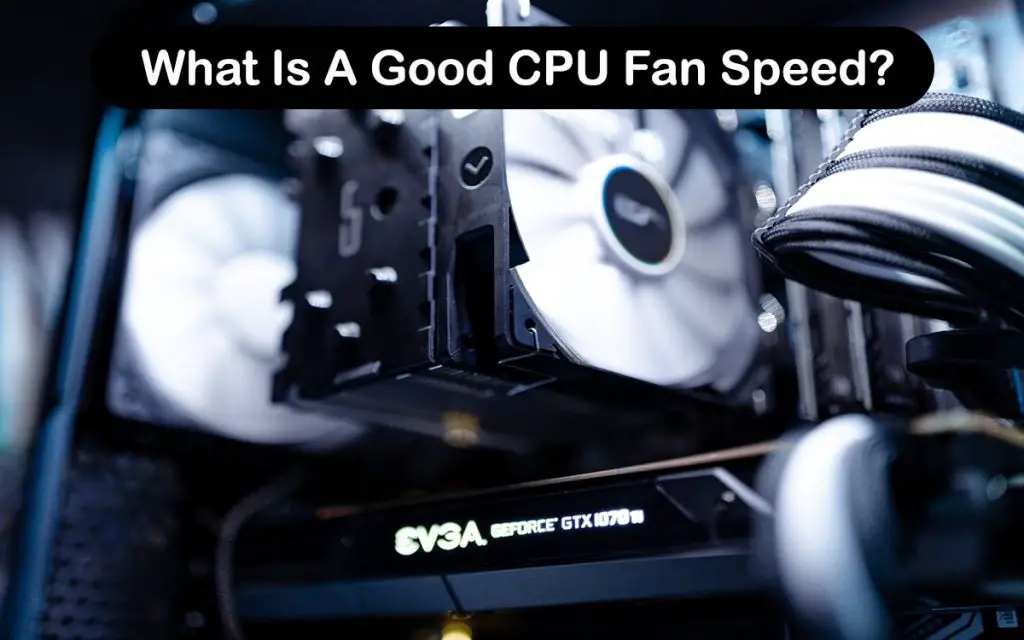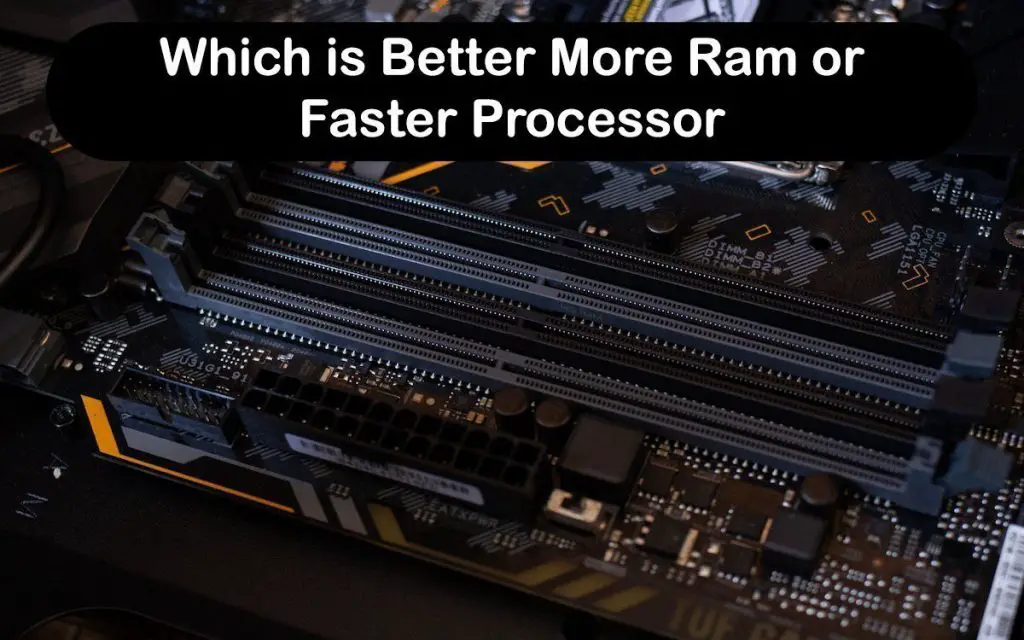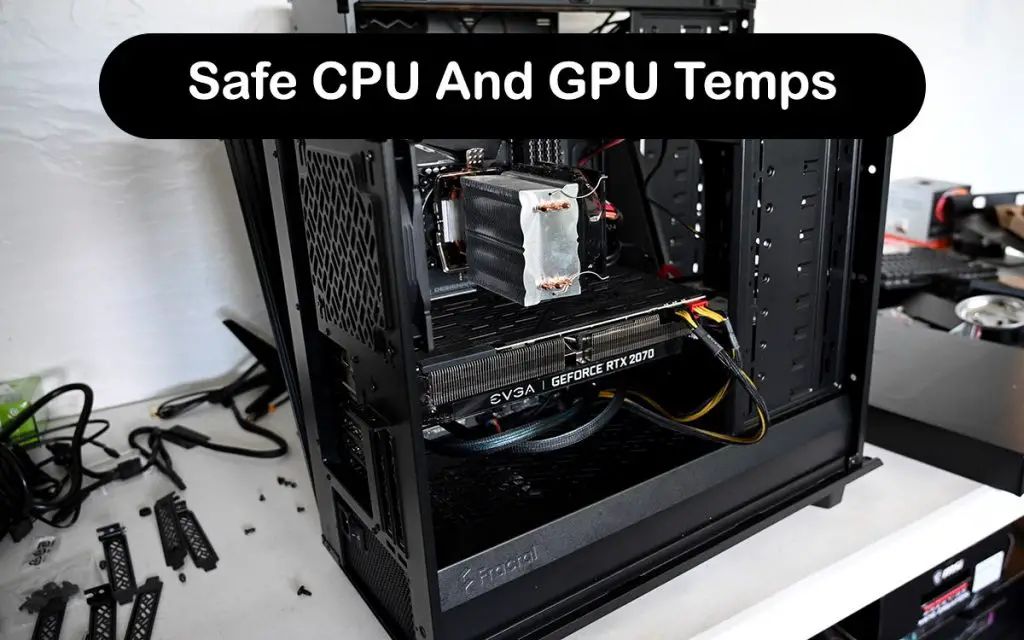The speed at which you run your CPU fan can have a huge impact. If you want your CPU to have the best performance, then consider creating a custom fan curve for your CPU fan. But what is a good CPU fan speed?
You first need to understand that the CPU fan changes its speed by following the fan curve. The fan curve makes the CPU fan speed up when the CPU hits higher temperatures. Conversely, the CPU fan slows down when you are not doing anything on your computer. So, what is a good CPU fan speed?
If you are a gamer or want to get the maximum performance achievable on your CPU, then set the fan speed to 100% when the CPU goes above 70°C. You can try to make a balanced fan curve by letting the CPU fan gradually speed up as the CPU heats up or you can keep the fan speed at 0% when the temperature is below 50°C.
There are benefits and downsides to different fan speeds, so try to make a balanced fan curve. Let’s go over CPU fan speed in more detail where you will learn how to choose the right fan speed and why it is not something that you should ignore.
Does CPU Fan Speed Matter?
In short, CPU fan speed matters. The CPU fan speed affects the CPU’s temperature directly, which in turn affects the performance and lifespan of your CPU. The cooler your CPU runs, the better. This means that technically speaking, running your CPU fan at maximum speed would be the best option. However, if you have ever made your fan run at 100% speed, you would have noticed that it is very loud and annoying.
This is where having a good CPU fan curve comes in. A fan curve will allow your CPU fan to be quiet when you are not doing anything, but it will also allow it to speed up when you are playing a game or doing other intensive tasks. While you can keep your CPU fan speed at 60-70% under a full load, this will result in more stutter and higher temperatures than when you allow the fan to hit 100%.
So, the CPU fan speed has a direct effect on your performance. So, what is a good CPU fan speed with that in mind? You probably want to make a fan curve that lets the fan spin at maximum speed once it reaches a certain threshold. Most people find it comfortable when their fan spins up to 100% once it reaches the 70-80°C range. You can let the fan hit 100% before that, but you should remember that the CPU fan can get very loud and annoying.
If you do not mind the noise, you can let the fan hit 100% at 70°C. On the other side of the spectrum, if you are sensitive to noise, let it hit 100% only at around 80°C. Try to balance the rest of the fan curve around that. Do not let the fan speed up too rapidly because changes in fan speed are more noticeable than a constant fan speed that always makes the same amount of noise.
Getting lower CPU temperatures generally means that your CPU will get better performance because it will not have to thermal throttle. However, if your CPU is already running at low temperatures, the fan speed will not affect the temperature much. Still, having a custom fan curve is better than using the automatic one and it will not make your fan ramp up if the temperatures are fine.
Can CPU Fan Speed Be Controlled?
Yes, CPU fan speed can be controlled. You can create a custom CPU fan curve using different methods. The easiest one is to do it inside the BIOS, but it means that you have to reboot your computer every time you want to change the CPU fan curve. This is a good permanent solution, but you may want to tweak the CPU fan speed in a program before setting it up inside the BIOS.
In addition to the BIOS, you can also change CPU fan speed inside some third-party programs. Note that there are very few programs that let you do that because the CPU fan is controlled by the motherboard.
Also, your computer case may let you connect the CPU fan to an external fan controller that can be found on the case itself. This is common in gaming computer cases. You just have to plug the CPU fan into the controller instead of plugging it into the motherboard.
This means that you may have to disable the automatic CPU fan check when your computer starts. It also means that you need to pay attention to the CPU temperatures because the fan may be turned off without you noticing it.
Is 2000 RPM Good for CPU Fan?
Running your CPU fan at 2000 RPM will probably result in good temperatures, but it will also result in a very loud CPU fan. You do not have to keep your CPU fan at such high speeds at all times.
RPM stands for “revolutions per minute“. In other words, it is a number that tells you how many times your CPU fan spins in a minute. The CPU fan RPM is important, but it is not as essential to the performance of the fan as you might think. A higher RPM means that the fan will get louder and perform better than when running at a lower RPM, but it does not mean that it is better than a slower fan.
Not all fans can hit 2000 RPM and that is fine. Bigger fans produce the same airflow when running at a lower RPM as smaller fans that spin at 2000 RPM. The blade design is also very important for the performance of the fan. Fans that are optimized for static pressure are better when used on a CPU cooler than fans that have blades optimized for the best airflow. You should use each fan the way it is intended to get the best performance and acoustics.
What Is a Good CPU Fan Curve?
A good CPU fan curve will allow your CPU fan to be as silent as possible when your computer is idling. The idle temps depend a lot on the climate where you live. The idle temps should generally stay under 50°C. You can create a fan curve that will leave your CPU fan at 0% as long as the CPU stays under that temperature.
However, if you live in a hotter climate, your CPU will reach idle temps that are significantly higher. You probably want your fan to spin at all times in that case, even if it is at only 10-15%.
No matter where you live, you should let your CPU fan hit 100% when the CPU goes above 80°C. This will ensure that you do not experience a lot of thermal throttling and that your CPU lifespan will not be compromised. If the noise generated by the fan still bothers you, consider upgrading your CPU fan to lower the noise.
If you have a good aftermarket cooler, you won’t have to make the CPU fan hit 100% to get good temperatures. You can still do it, though, because the fan will only speed up if your CPU hits a certain temperature.
When making a CPU fan curve, do not make the fan hit a significantly higher speed when it reaches a certain temperature because you will hear the fan speed up and slow down all the time when gaming, which is much more noticeable than having it spin a bit faster in the first place. This is why it can be tricky to make a fan curve where the fan does not spin at all, but it is possible.
So, what is a good CPU fan speed? Allow your CPU fan to hit 100% when the CPU hits 75°C and before that make the fan increase its speed gradually. You can let it speed up by 3% for every 1°C. Do it from the right to the left if you want to make the best fan curve.
Should I Set My CPU Fan to Full Speed?
You should set your CPU fan to full speed only at a high temperature. While you can let it spin at full speed the whole time, you will kill the fan much faster and there will be more dust. Not to mention that the noise generated by the fan will be very annoying. So, only let it hit 100% when it hits a high temperature. The fan will still make a lot of noise, but you will not hear it if you wear headphones or turn up the volume.
Does Increasing Fan Speed Increase FPS?
Increasing your fan speed will result in lower temperatures, which sometimes means that you will get better performance too. This is only true if your CPU is thermal throttling. You will experience less stutter and get slightly better FPS in CPU-demanding games because the CPU will not have to slow down itself to keep it at a safe temperature.
If your CPU is overclocked and does not thermal throttle, you will not see any changes in the performance. You still may want to increase the fan speed to make the system more stable, which means that you will experience fewer crashes. What is a good CPU fan speed for gaming? You can let the CPU fan hit 100% when the temperature goes above 70°C and then balance the rest of the fan curve around that.
Conclusion
Having a decent CPU fan curve is essential if you want to have the best acoustics and performance. What is a good CPU fan speed is up to you to decide. If you want the best performance possible, let the CPU fan hit 100% as soon as it goes above 70°C.
However, if the noise generated by your CPU fan is very loud, you can let it hit 100% only at temperatures above 80°C. If you have a good aftermarket cooler, you do not even have to let the fan hit 100% but instead keep it at 70-80%. When making your CPU fan curve, bear in mind that constant changes in fan speed are more audible than having the fan spin fast from the start.





